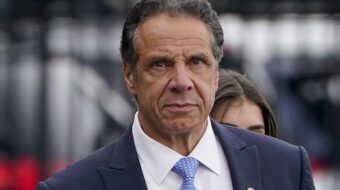WASHINGTON—President Obama’s promise June 8 to deliver 600,000 jobs this summer under his $787 billion stimulus package drew praise from organizations fighting to lower the highest unemployment rate since the Great Depression.
In a statement from the White House, Obama highlighted hundreds of maintenance projects, 1,600 state highway and airport improvements and federal funds budgeted for 135,000 teachers, principals and school support staff at risk of being laid off as the state and local fiscal crisis grows worse.
Obama said the Department of Health and Human Services will provide funding for 1,129 health centers serving 300,000 patients. The Interior Department will begin improvement on 107 national parks and Veterans Affairs will start work on 90 medical centers in 50 states. The Justice Department will fund 5,000 law enforcement jobs and the Department of Agriculture will begin 200 new rural waste and water system projects. The Environmental Protection Agency will accelerate the cleanup of 20 Superfund sites.
The effort to speed up these projects was prompted by the May unemployment report showing that the jobless rate soared to 9.4 percent last month, the highest in 25 years. Although fewer jobs were lost last month than in April earlier, the economy still shed 345,000 jobs.
Senate Minority Leader Mitch McConnell (R-KY) gloated over the rise in unemployment and derided Obama’s efforts to reverse the job losses. McConnell said the economy should be left “to recover on its own” without any federal jobs program. The GOP’s sole proposal is making permanent ex-President G.W. Bush’s trillions in tax giveaways to the rich.
“It’s very good that the President is focusing on this,” said John Dodds, veteran leader of the Philadelphia Unemployment Project PUP. “The money has been a little slow getting out and there is concern over where the jobs are.”
The stimulus package, he added, “is massive. I wish some of the money would go to direct job creation like WPA during the Depression and CETA back in the 1970s.” He was referring to President Franklin Roosevelt’s Works Progress Administration which employed tens of millions, building roads, bridges, parks and other infrastructure projects and the Community Employment and Training Act. “CETA was a major employer back in the 1970s,” he said. “It created jobs right in our communities. Direct government job creation today could employ people in weatherization of buildings, expanded day care and after school programs and recreation programs for young people. I’m certainly not knocking the guy but the unemployment is going up, up, up.”
Obama’s successful push for extended unemployment insurance has been a lifeline for millions of jobless workers, Dodds continued. “But people are beginning to run out of even the extended benefits without finding a job. There is no consumer spending. That’s the reason getting the money out to people is so important.”
PUP, Dodds said, is staging a march Tuesday in Harrisburg, Pennsylvania’s state capital. The action, titled “Save Our Homes Day,” will demand more funding to help people facing loss of their homes in foreclosure. “We have a state mortgage assistance program but it almost never approves people who are unemployed for assistance,” he explained. “The program was designed for these people but they are considered ‘not good credit risks.’”
Many economists warn that ending the foreclosure crisis is key to bringing the nation out of this economic recession. Foreclosures and bankruptcies are at an all time record high. The healthcare crisis is also a major factor. A recent report found that 64 percent of those losing their homes in foreclosure fell behind on their mortgage payments because they got sick or suffered an accident and had no health insurance.
Heidi Shierholz, an economist with the Economic Policy Institute, zeroed in on another worrisome factor in the current unemployment crisis. The May jobless report by the U.S. Bureau of Labor Statistics not only showed continuing high job losses, it also showed “continued dramatic collapse of wage growth.” In her report titled, “Been Down So Long it Looks Like Up to Me,” Shierholz points out that during the first year of the recession, wages for those who held onto their jobs “remained relatively strong.” She adds, “Since that time, however, wage growth has slowed abruptly; in May 2009, wages grew at a 1.3 percent annualized rate, one-third the earlier pace.”
Weekly wage growth “has declined even more as workers have seen their hours cut back—nominal weekly wage growth was 2.4 percent from December 2007 to December 2008 but declined at a 2.3 percent annualized rate in May.”
She concludes, “The recent collapse of wage growth…means not only that the recession is adversely affecting even those who keep their jobs, but als that there is additional downward pressure on consumption which will suppress the pace of any economic recovery.”









